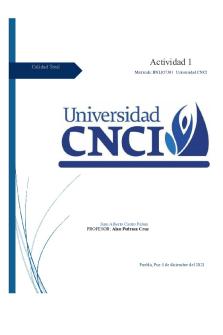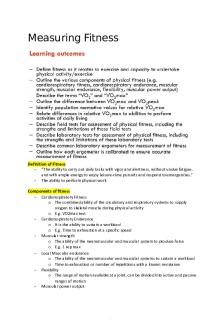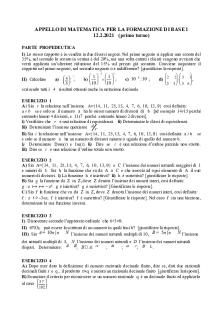3.3.8 Aldehydes and Ketones A2 dad d d d. D d f f f g gg h g gg g g g gf fejedm books band car house the sky is falling and I am falling falling falling I think I’m gonna fall real,y badly PDF

| Title | 3.3.8 Aldehydes and Ketones A2 dad d d d. D d f f f g gg h g gg g g g gf fejedm books band car house the sky is falling and I am falling falling falling I think I’m gonna fall real,y badly |
|---|---|
| Author | Samir Khanzada |
| Course | Foundations Of Medical Practice For Medical Assistants |
| Institution | Imperial Valley College |
| Pages | 87 |
| File Size | 2.3 MB |
| File Type | |
| Total Views | 143 |
Summary
dad d d d. D d f f f g gg h g gg g g g gf fejedm books band car house the sky is falling and I am falling falling falling I think I’m gonna fall real,y badly...
Description
Name:
A-Level Chemistry 3.3.8 Aldehydes and ketones A2
Class:
Time:
Marks:
305
Comments:
Page 1 of 87
1
Butanone is reduced in a two-step reaction using NaBH4 followed by dilute hydrochloric acid. (a)
Write an overall equation for the reduction of butanone using [H] to represent the reductant. ................................................................................................................... (1)
(b)
By considering the mechanism of the reaction, explain why the product has no effect on plane polarised light. ................................................................................................................... ................................................................................................................... ................................................................................................................... ................................................................................................................... ................................................................................................................... ................................................................................................................... ................................................................................................................... ................................................................................................................... ................................................................................................................... ................................................................................................................... (6) (Total 7 marks)
Page 2 of 87
2
Ethanol can be oxidised by acidified potassium dichromate(VI) to ethanoic acid in a two-step process. ethanol (a)
ethanal
ethanoic acid
In order to ensure that the oxidation to ethanoic acid is complete, the reaction is carried out under reflux. Describe what happens when a reaction mixture is refluxed and why it is necessary, in this case, for complete oxidation to ethanoic acid. ................................................................................................................... ................................................................................................................... ................................................................................................................... ................................................................................................................... ................................................................................................................... ................................................................................................................... ................................................................................................................... ................................................................................................................... (3)
(b)
Write a half-equation for the overall oxidation of ethanol into ethanoic acid. ................................................................................................................... (1)
Page 3 of 87
(c)
The boiling points of the organic compounds in a reaction mixture are shown in the following table. Compound Boiling point / °C
ethanol
ethanal
ethanoic acid
78
21
118
Use these data to describe how you would obtain a sample of ethanal from a mixture of these three compounds. Include in your answer a description of the apparatus you would use and how you would minimise the loss of ethanal. Your description of the apparatus can be either a description in words or a labelled sketch. ................................................................................................................... ................................................................................................................... ................................................................................................................... ................................................................................................................... ................................................................................................................... ................................................................................................................... ................................................................................................................... ................................................................................................................... (5)
(d)
Use your knowledge of structure and bonding to explain why it is possible to separate ethanal in this way. ................................................................................................................... ................................................................................................................... ................................................................................................................... ................................................................................................................... ................................................................................................................... (2)
Page 4 of 87
(e)
A student obtained a sample of a liquid using the apparatus in part (c). Describe how the student could use chemical tests to confirm that the liquid contained ethanal and did not contain ethanoic acid. ................................................................................................................... ................................................................................................................... ................................................................................................................... ................................................................................................................... ................................................................................................................... ................................................................................................................... ................................................................................................................... ................................................................................................................... (5) (Total 16 marks)
3
Which alcohol could not be produced by the reduction of an aldehyde or a ketone? A
2-methylbutan-1-ol
B
2-methylbutan-2-ol
C
3-methylbutan-1-ol
D
3-methylbutan-2-ol (Total 1 mark)
4
The carbonyl compound CH3CH2CHO reacts very slowly with HCN (a)
Name and outline a mechanism for the reaction of CH3CH2CHO with HCN Name of mechanism ................................................................................... Mechanism
(5)
Page 5 of 87
(b)
The reaction in part (a) produces a pair of enantiomers. (i)
Draw the structure of each enantiomer to show how they are related to each other.
(2)
(ii)
State and explain how you could distinguish between the two enantiomers. ........................................................................................................... ........................................................................................................... ........................................................................................................... ........................................................................................................... (2)
(c)
Give the IUPAC name of the product of the reaction in part (a). ................................................................................................................... (1)
(d)
In practice, KCN rather than HCN is added to the carbonyl compound. Given that K a for HCN = 4.0 × 10 –10 mol dm–3, suggest why the reaction with HCN is very slow. ................................................................................................................... ................................................................................................................... ................................................................................................................... ................................................................................................................... (2)
Page 6 of 87
(e)
Acrylic fibres are used as a substitute for wool. Acrylics are copolymers of acrylonitrile with other compounds. Acrylonitrile is the common name for the following compound. H2 C = CH − C ≡ N (i)
Acrylonitrile can be formed from propene. Write an equation for the reaction of propene with ammonia and oxygen to form acrylonitrile and one other product. ........................................................................................................... (1)
(ii)
The term copolymer is used to describe the product obtained when two or more different monomers form a polymer. Draw the repeating unit of the acrylic copolymer that contains 75% acrylonitrile monomer and 25% chloroethene monomer.
(1)
(iii)
Name the type of polymerisation involved in part (ii) ........................................................................................................... (1) (Total 15 marks)
Page 7 of 87
5
This question is about some isomers of C5H 8O 2 (a)
Compound H is a cyclic ester that can be prepared as shown. On the structure of H, two of the carbon atoms are labelled.
HOCH2CH 2CH2 CH2COCl
+ HCL
H (i)
Name and outline a mechanism for this reaction. Use Table C on the Data Sheet to give the 13C n.m.r. δ value for the carbon atom labelled a and the δ value for the carbon atom labelled b. ........................................................................................................... ........................................................................................................... ........................................................................................................... ........................................................................................................... ........................................................................................................... ........................................................................................................... ........................................................................................................... ........................................................................................................... ........................................................................................................... ........................................................................................................... ........................................................................................................... ........................................................................................................... ........................................................................................................... ........................................................................................................... ........................................................................................................... ........................................................................................................... (7)
Page 8 of 87
(ii)
HOCH 2CH2 CH2CH2COCl can also react to form a polyester in a mechanism similar to that in part (i). Draw the repeating unit of the polyester and name the type of polymerisation involved. ........................................................................................................... ........................................................................................................... ........................................................................................................... ........................................................................................................... ........................................................................................................... (2)
(b)
State how you could distinguish between compounds J and K by a simple test-tube reaction. State how you could distinguish between J and K by giving the number of peaks in the 1
H n.m.r. spectrum of each compound.
J
K
................................................................................................................... ................................................................................................................... ................................................................................................................... ................................................................................................................... ................................................................................................................... ................................................................................................................... ................................................................................................................... ................................................................................................................... (5)
Page 9 of 87
(c)
Draw the structure of each of the following isomers of C5 H 8O2 Label each structure you draw with the correct letterL, M, N, P or Q. L is methyl 2-methylpropenoate. M is an ester that shows E-Z stereoisomerism. N is a carboxylic acid with a branched carbon chain and does not show stereoisomerism. P is an optically active carboxylic acid. Q is a cyclic compound that contains a ketone group and has only two peaks in its 1H n.m.r. spectrum.
(5) (Total 19 marks)
6
Lactic acid, CH3 CH(OH)COOH, is formed in the human body during metabolism and exercise. This acid is also formed by the fermentation of carbohydrates such as sucrose, C12H22O 11. (a)
(i)
Give the IUPAC name for lactic acid. ........................................................................................................... (1)
(ii)
Write an equation for the formation of lactic acid from sucrose and water. ........................................................................................................... (1)
Page 10 of 87
(b)
A molecule of lactic acid contains an asymmetric carbon atom. The lactic acid in the body occurs as a single enantiomer. A racemic mixture (racemate) of lactic acid can be formed in the following two-stage synthesis.
(i)
Name and outline a mechanism for Stage 1. Name of mechanism .......................................................................... Mechanism
(5)
(ii)
Give the meaning of the term racemic mixture (racemate). ........................................................................................................... ........................................................................................................... ........................................................................................................... (1)
(iii)
Explain how you could distinguish between a racemic mixture (racemate) of lactic acid and one of the enantiomers of lactic acid. ........................................................................................................... ........................................................................................................... ........................................................................................................... ........................................................................................................... (2)
(c)
A mixture of lactic acid and its salt sodium lactate is used as an acidity regulator in some foods. An acidity regulator makes sure that there is little variation in the pH of food. (i)
Write an equation for the reaction of lactic acid with sodium hydroxide. ........................................................................................................... (1) Page 11 of 87
(ii)
The acid dissociation constant Ka for lactic acid has the value 1.38 × 10−4 mol dm−3 at 298 K. Calculate the pH of an equimolar solution of lactic acid and sodium lactate. ........................................................................................................... ........................................................................................................... ........................................................................................................... ........................................................................................................... (2)
(iii)
Suggest an alternative name for the term acidity regulator. Explain how a mixture of lactic acid and sodium lactate can act as a regulator when natural processes increase the acidity in some foods. Name ............................................................................................... Explanation ........................................................................................ ........................................................................................................... ........................................................................................................... ........................................................................................................... (Extra space) ..................................................................................... ........................................................................................................... (3)
Page 12 of 87
(d)
The cup shown is made from PLA, poly(lactic acid). PLA is the condensation polymer formed from lactic acid. The polymer is described as 100% biodegradable and 100% compostable. Compostable material breaks down slowly in contact with the moist air in a garden bin. This produces compost that can be used to improve soil. The manufacturers stress that PLA cups differ from traditional plastic cups that are neither biodegradable nor compostable. (i)
Draw a section of PLA that shows two repeating units.
(2)
(ii)
Name the type of condensation polymer in PLA. ........................................................................................................... (1)
Page 13 of 87
(iii)
An intermediate in the production of PLA is a cyclic compound (C6H8O4 ) that is formed from two PLA molecules. Draw the structure of this cyclic compound.
(1)
(iv)
Traditional non-biodegradable plastic cups can be made from poly(phenylethene), commonly known as polystyrene . Draw the repeating unit of poly(phenylethene).
(1)
(v)
The manufacturers of PLA claim...
Similar Free PDFs

Cv statistica g d annunx
- 16 Pages

Handout for G&D and Health Promotion
- 10 Pages

PPP100 202052 G D-version 2
- 37 Pages

Cohen’s d, Cohen’s f, and
- 3 Pages

Amplificadores clase D,E,F
- 8 Pages
Popular Institutions
- Tinajero National High School - Annex
- Politeknik Caltex Riau
- Yokohama City University
- SGT University
- University of Al-Qadisiyah
- Divine Word College of Vigan
- Techniek College Rotterdam
- Universidade de Santiago
- Universiti Teknologi MARA Cawangan Johor Kampus Pasir Gudang
- Poltekkes Kemenkes Yogyakarta
- Baguio City National High School
- Colegio san marcos
- preparatoria uno
- Centro de Bachillerato Tecnológico Industrial y de Servicios No. 107
- Dalian Maritime University
- Quang Trung Secondary School
- Colegio Tecnológico en Informática
- Corporación Regional de Educación Superior
- Grupo CEDVA
- Dar Al Uloom University
- Centro de Estudios Preuniversitarios de la Universidad Nacional de Ingeniería
- 上智大学
- Aakash International School, Nuna Majara
- San Felipe Neri Catholic School
- Kang Chiao International School - New Taipei City
- Misamis Occidental National High School
- Institución Educativa Escuela Normal Juan Ladrilleros
- Kolehiyo ng Pantukan
- Batanes State College
- Instituto Continental
- Sekolah Menengah Kejuruan Kesehatan Kaltara (Tarakan)
- Colegio de La Inmaculada Concepcion - Cebu




![Quantization energy lab report er g g g g g g g g g g g g g g g g g g g g g g]\\](https://pdfedu.com/img/crop/172x258/og2v1qo08824.jpg)





